Business Report: North London Chamber of Commerce Assignment
VerifiedAdded on 2023/02/02
|9
|1527
|51
Report
AI Summary
This business report, prepared for the North London Chamber of Commerce and Enterprise (NLCCE), delves into various organizational aspects. It begins by differentiating between profit, non-profit, and non-government organizations, detailing their objectives and revenue sources. The report then contrasts micro, small, and medium enterprises based on their purposes, objectives, and market shares. Furthermore, it explains the distinctions between franchising, joint ventures, and licensing. The core of the report examines the interrelationship of various functional departments within an organization, specifically using Mark and Spencer as a case study, and how these functions link to organizational structure. It highlights the interdependencies between marketing and HR, finance and operations, and operations and HR. The report concludes by summarizing the key takeaways, including the different types of organizations, their characteristics, and the importance of functional interrelationships.
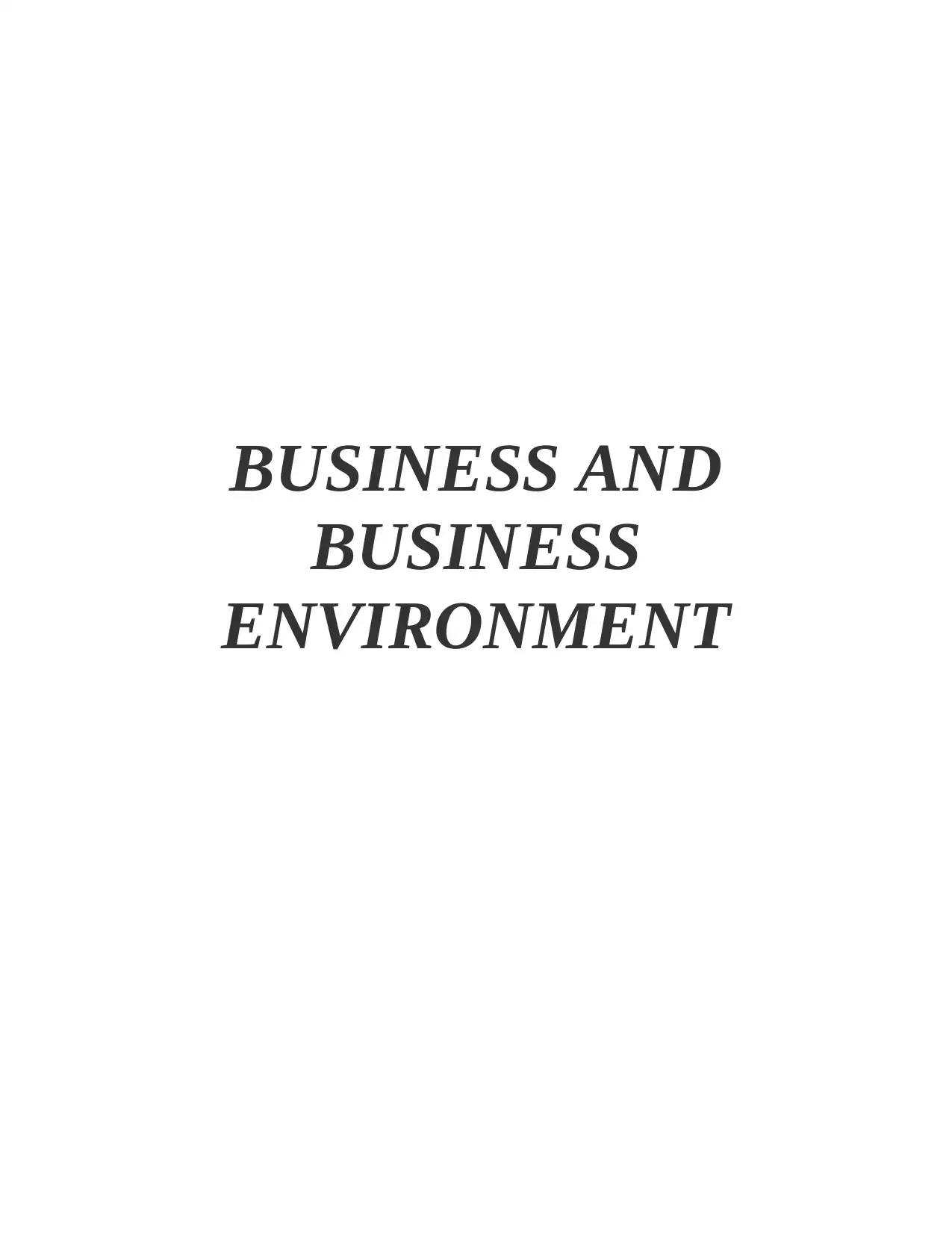
BUSINESS AND
BUSINESS
ENVIRONMENT
BUSINESS
ENVIRONMENT
Paraphrase This Document
Need a fresh take? Get an instant paraphrase of this document with our AI Paraphraser
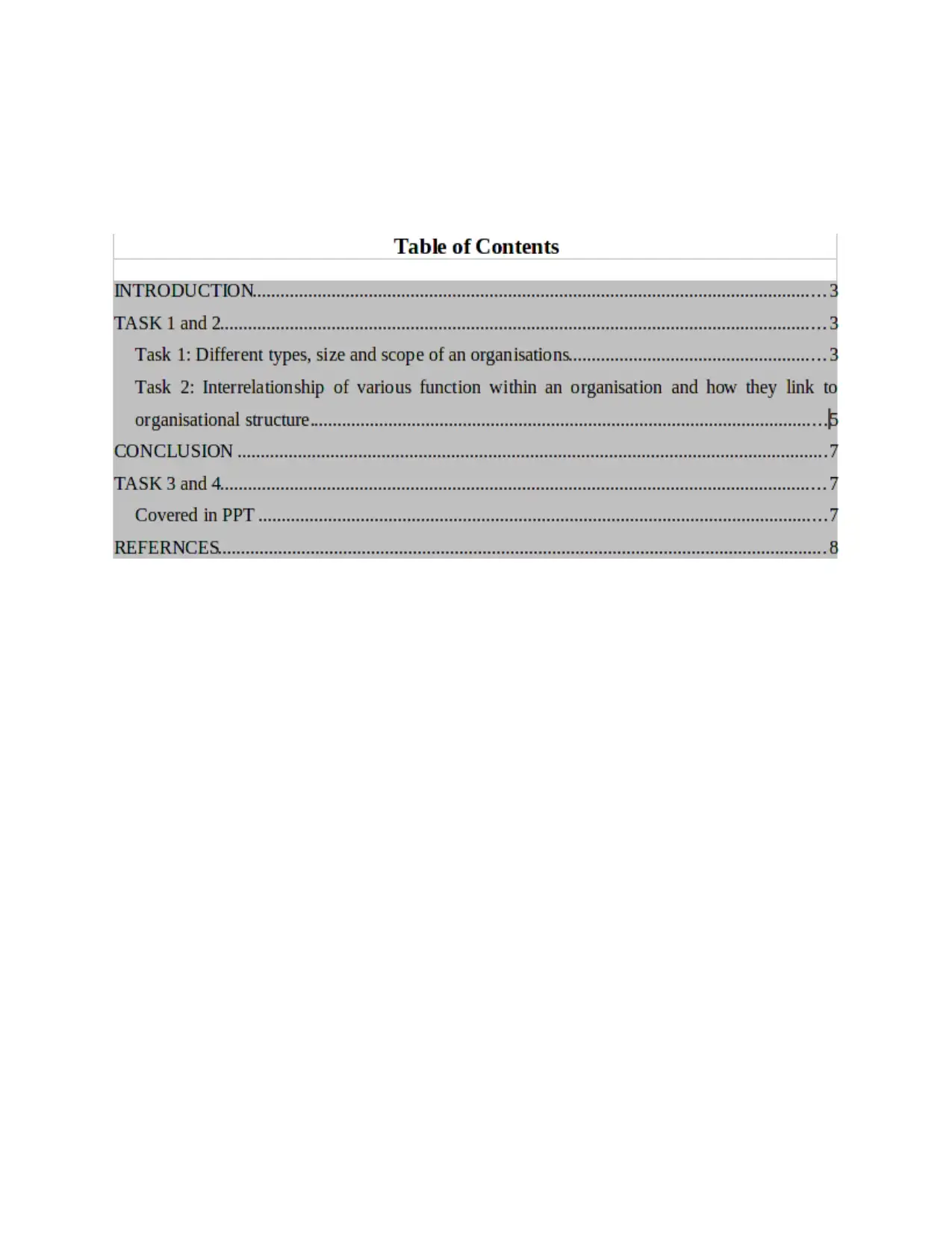
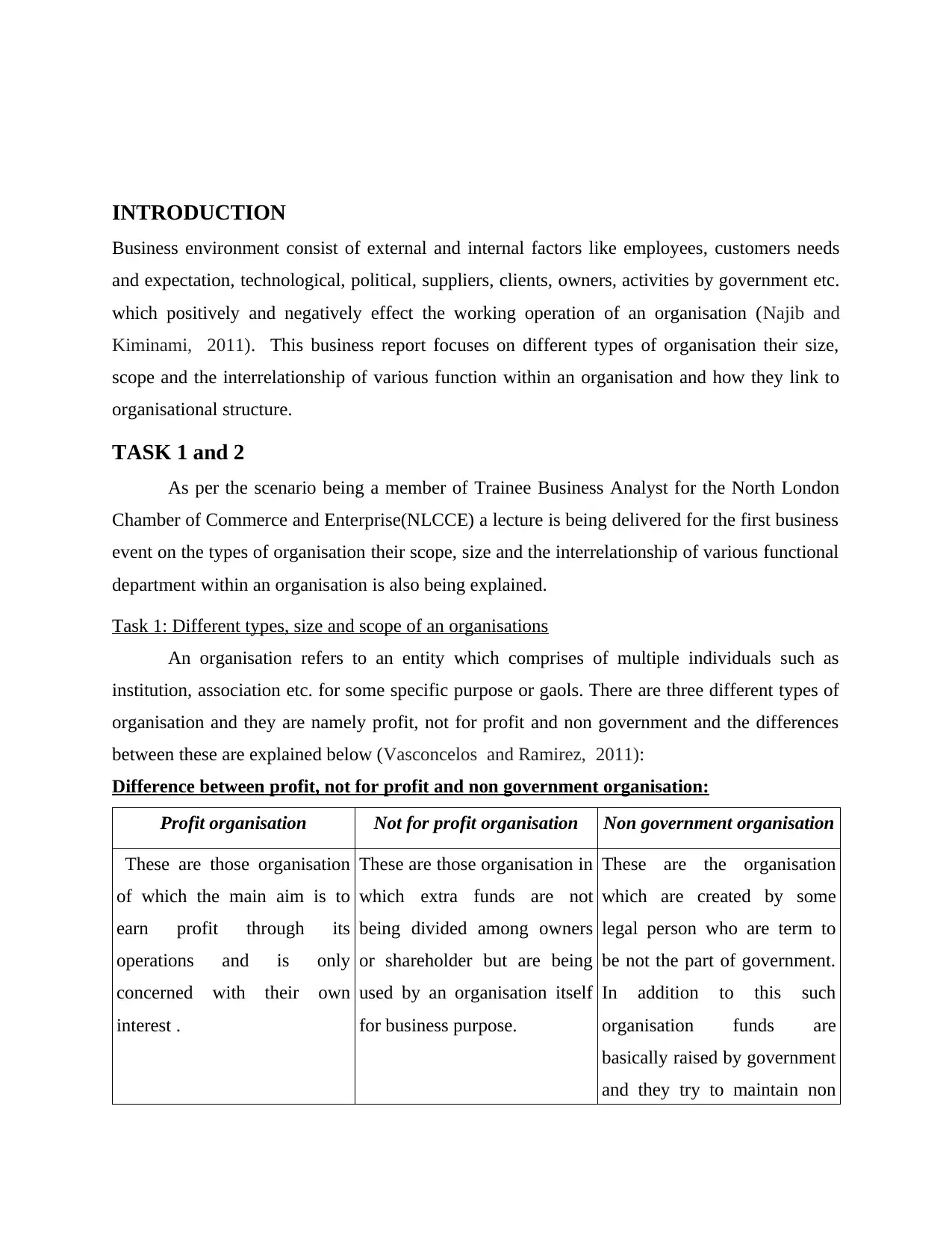
INTRODUCTION
Business environment consist of external and internal factors like employees, customers needs
and expectation, technological, political, suppliers, clients, owners, activities by government etc.
which positively and negatively effect the working operation of an organisation (Najib and
Kiminami, 2011). This business report focuses on different types of organisation their size,
scope and the interrelationship of various function within an organisation and how they link to
organisational structure.
TASK 1 and 2
As per the scenario being a member of Trainee Business Analyst for the North London
Chamber of Commerce and Enterprise(NLCCE) a lecture is being delivered for the first business
event on the types of organisation their scope, size and the interrelationship of various functional
department within an organisation is also being explained.
Task 1: Different types, size and scope of an organisations
An organisation refers to an entity which comprises of multiple individuals such as
institution, association etc. for some specific purpose or gaols. There are three different types of
organisation and they are namely profit, not for profit and non government and the differences
between these are explained below (Vasconcelos and Ramirez, 2011):
Difference between profit, not for profit and non government organisation:
Profit organisation Not for profit organisation Non government organisation
These are those organisation
of which the main aim is to
earn profit through its
operations and is only
concerned with their own
interest .
These are those organisation in
which extra funds are not
being divided among owners
or shareholder but are being
used by an organisation itself
for business purpose.
These are the organisation
which are created by some
legal person who are term to
be not the part of government.
In addition to this such
organisation funds are
basically raised by government
and they try to maintain non
Business environment consist of external and internal factors like employees, customers needs
and expectation, technological, political, suppliers, clients, owners, activities by government etc.
which positively and negatively effect the working operation of an organisation (Najib and
Kiminami, 2011). This business report focuses on different types of organisation their size,
scope and the interrelationship of various function within an organisation and how they link to
organisational structure.
TASK 1 and 2
As per the scenario being a member of Trainee Business Analyst for the North London
Chamber of Commerce and Enterprise(NLCCE) a lecture is being delivered for the first business
event on the types of organisation their scope, size and the interrelationship of various functional
department within an organisation is also being explained.
Task 1: Different types, size and scope of an organisations
An organisation refers to an entity which comprises of multiple individuals such as
institution, association etc. for some specific purpose or gaols. There are three different types of
organisation and they are namely profit, not for profit and non government and the differences
between these are explained below (Vasconcelos and Ramirez, 2011):
Difference between profit, not for profit and non government organisation:
Profit organisation Not for profit organisation Non government organisation
These are those organisation
of which the main aim is to
earn profit through its
operations and is only
concerned with their own
interest .
These are those organisation in
which extra funds are not
being divided among owners
or shareholder but are being
used by an organisation itself
for business purpose.
These are the organisation
which are created by some
legal person who are term to
be not the part of government.
In addition to this such
organisation funds are
basically raised by government
and they try to maintain non
⊘ This is a preview!⊘
Do you want full access?
Subscribe today to unlock all pages.

Trusted by 1+ million students worldwide
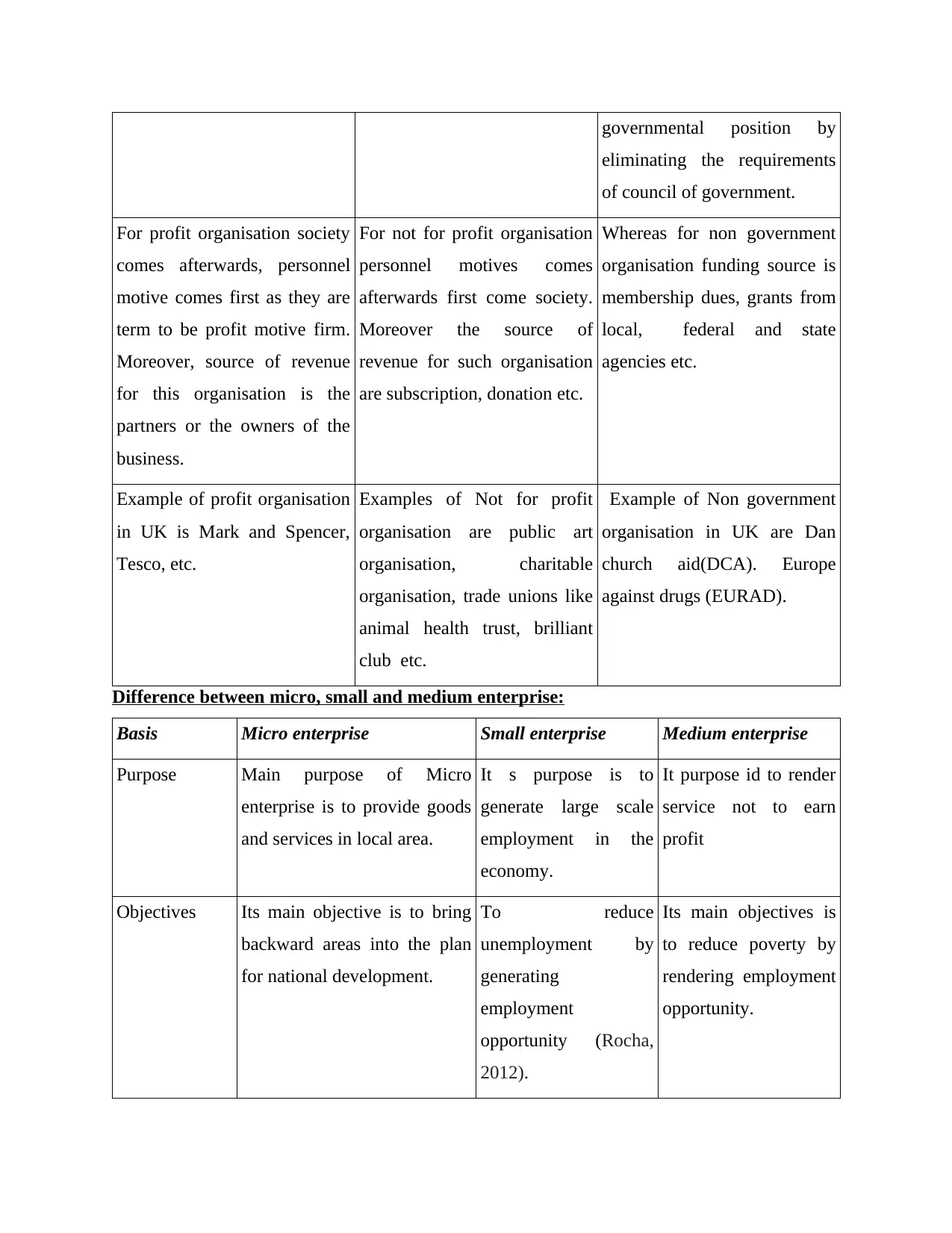
governmental position by
eliminating the requirements
of council of government.
For profit organisation society
comes afterwards, personnel
motive comes first as they are
term to be profit motive firm.
Moreover, source of revenue
for this organisation is the
partners or the owners of the
business.
For not for profit organisation
personnel motives comes
afterwards first come society.
Moreover the source of
revenue for such organisation
are subscription, donation etc.
Whereas for non government
organisation funding source is
membership dues, grants from
local, federal and state
agencies etc.
Example of profit organisation
in UK is Mark and Spencer,
Tesco, etc.
Examples of Not for profit
organisation are public art
organisation, charitable
organisation, trade unions like
animal health trust, brilliant
club etc.
Example of Non government
organisation in UK are Dan
church aid(DCA). Europe
against drugs (EURAD).
Difference between micro, small and medium enterprise:
Basis Micro enterprise Small enterprise Medium enterprise
Purpose Main purpose of Micro
enterprise is to provide goods
and services in local area.
It s purpose is to
generate large scale
employment in the
economy.
It purpose id to render
service not to earn
profit
Objectives Its main objective is to bring
backward areas into the plan
for national development.
To reduce
unemployment by
generating
employment
opportunity (Rocha,
2012).
Its main objectives is
to reduce poverty by
rendering employment
opportunity.
eliminating the requirements
of council of government.
For profit organisation society
comes afterwards, personnel
motive comes first as they are
term to be profit motive firm.
Moreover, source of revenue
for this organisation is the
partners or the owners of the
business.
For not for profit organisation
personnel motives comes
afterwards first come society.
Moreover the source of
revenue for such organisation
are subscription, donation etc.
Whereas for non government
organisation funding source is
membership dues, grants from
local, federal and state
agencies etc.
Example of profit organisation
in UK is Mark and Spencer,
Tesco, etc.
Examples of Not for profit
organisation are public art
organisation, charitable
organisation, trade unions like
animal health trust, brilliant
club etc.
Example of Non government
organisation in UK are Dan
church aid(DCA). Europe
against drugs (EURAD).
Difference between micro, small and medium enterprise:
Basis Micro enterprise Small enterprise Medium enterprise
Purpose Main purpose of Micro
enterprise is to provide goods
and services in local area.
It s purpose is to
generate large scale
employment in the
economy.
It purpose id to render
service not to earn
profit
Objectives Its main objective is to bring
backward areas into the plan
for national development.
To reduce
unemployment by
generating
employment
opportunity (Rocha,
2012).
Its main objectives is
to reduce poverty by
rendering employment
opportunity.
Paraphrase This Document
Need a fresh take? Get an instant paraphrase of this document with our AI Paraphraser
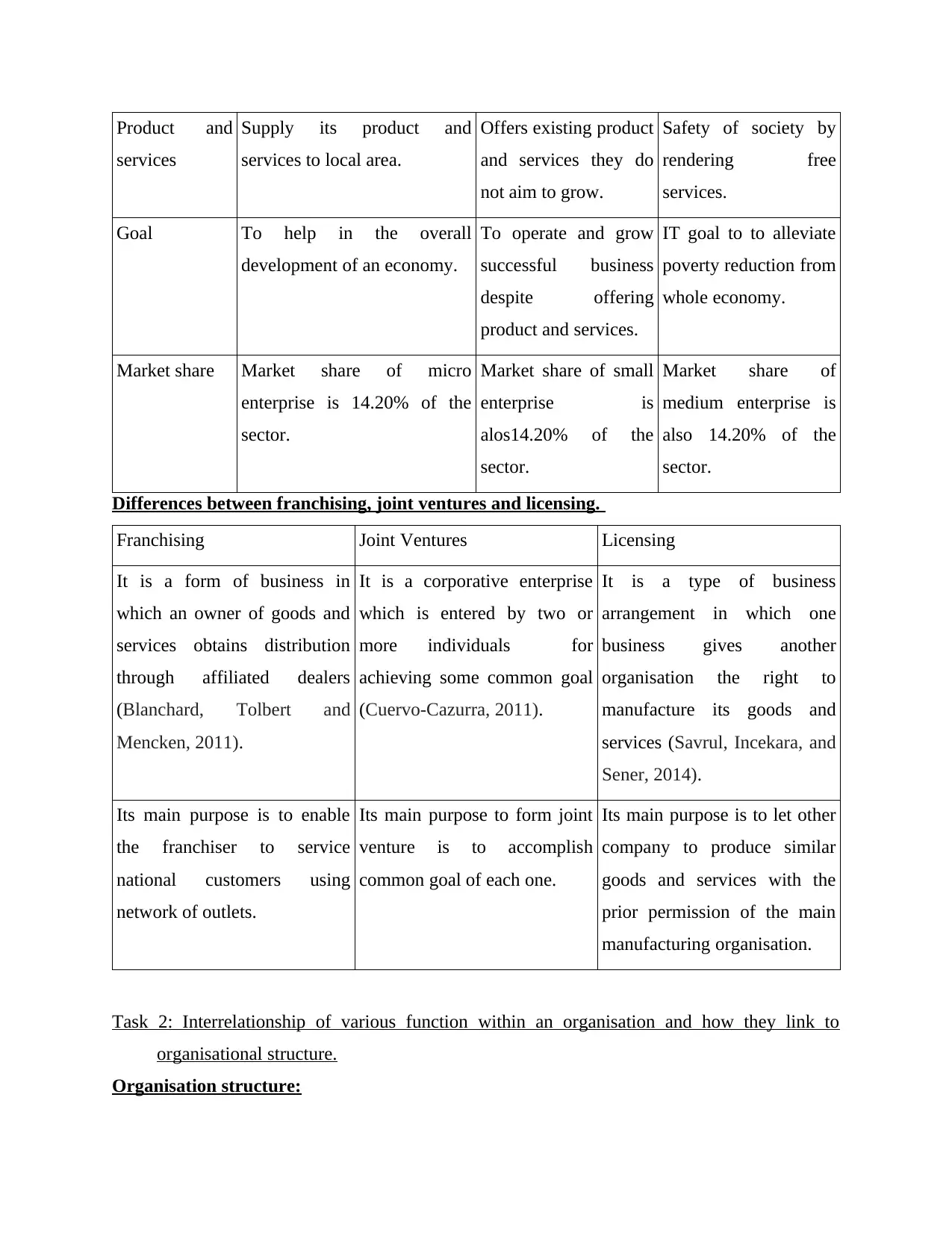
Product and
services
Supply its product and
services to local area.
Offers existing product
and services they do
not aim to grow.
Safety of society by
rendering free
services.
Goal To help in the overall
development of an economy.
To operate and grow
successful business
despite offering
product and services.
IT goal to to alleviate
poverty reduction from
whole economy.
Market share Market share of micro
enterprise is 14.20% of the
sector.
Market share of small
enterprise is
alos14.20% of the
sector.
Market share of
medium enterprise is
also 14.20% of the
sector.
Differences between franchising, joint ventures and licensing.
Franchising Joint Ventures Licensing
It is a form of business in
which an owner of goods and
services obtains distribution
through affiliated dealers
(Blanchard, Tolbert and
Mencken, 2011).
It is a corporative enterprise
which is entered by two or
more individuals for
achieving some common goal
(Cuervo‐Cazurra, 2011).
It is a type of business
arrangement in which one
business gives another
organisation the right to
manufacture its goods and
services (Savrul, Incekara, and
Sener, 2014).
Its main purpose is to enable
the franchiser to service
national customers using
network of outlets.
Its main purpose to form joint
venture is to accomplish
common goal of each one.
Its main purpose is to let other
company to produce similar
goods and services with the
prior permission of the main
manufacturing organisation.
Task 2: Interrelationship of various function within an organisation and how they link to
organisational structure.
Organisation structure:
services
Supply its product and
services to local area.
Offers existing product
and services they do
not aim to grow.
Safety of society by
rendering free
services.
Goal To help in the overall
development of an economy.
To operate and grow
successful business
despite offering
product and services.
IT goal to to alleviate
poverty reduction from
whole economy.
Market share Market share of micro
enterprise is 14.20% of the
sector.
Market share of small
enterprise is
alos14.20% of the
sector.
Market share of
medium enterprise is
also 14.20% of the
sector.
Differences between franchising, joint ventures and licensing.
Franchising Joint Ventures Licensing
It is a form of business in
which an owner of goods and
services obtains distribution
through affiliated dealers
(Blanchard, Tolbert and
Mencken, 2011).
It is a corporative enterprise
which is entered by two or
more individuals for
achieving some common goal
(Cuervo‐Cazurra, 2011).
It is a type of business
arrangement in which one
business gives another
organisation the right to
manufacture its goods and
services (Savrul, Incekara, and
Sener, 2014).
Its main purpose is to enable
the franchiser to service
national customers using
network of outlets.
Its main purpose to form joint
venture is to accomplish
common goal of each one.
Its main purpose is to let other
company to produce similar
goods and services with the
prior permission of the main
manufacturing organisation.
Task 2: Interrelationship of various function within an organisation and how they link to
organisational structure.
Organisation structure:
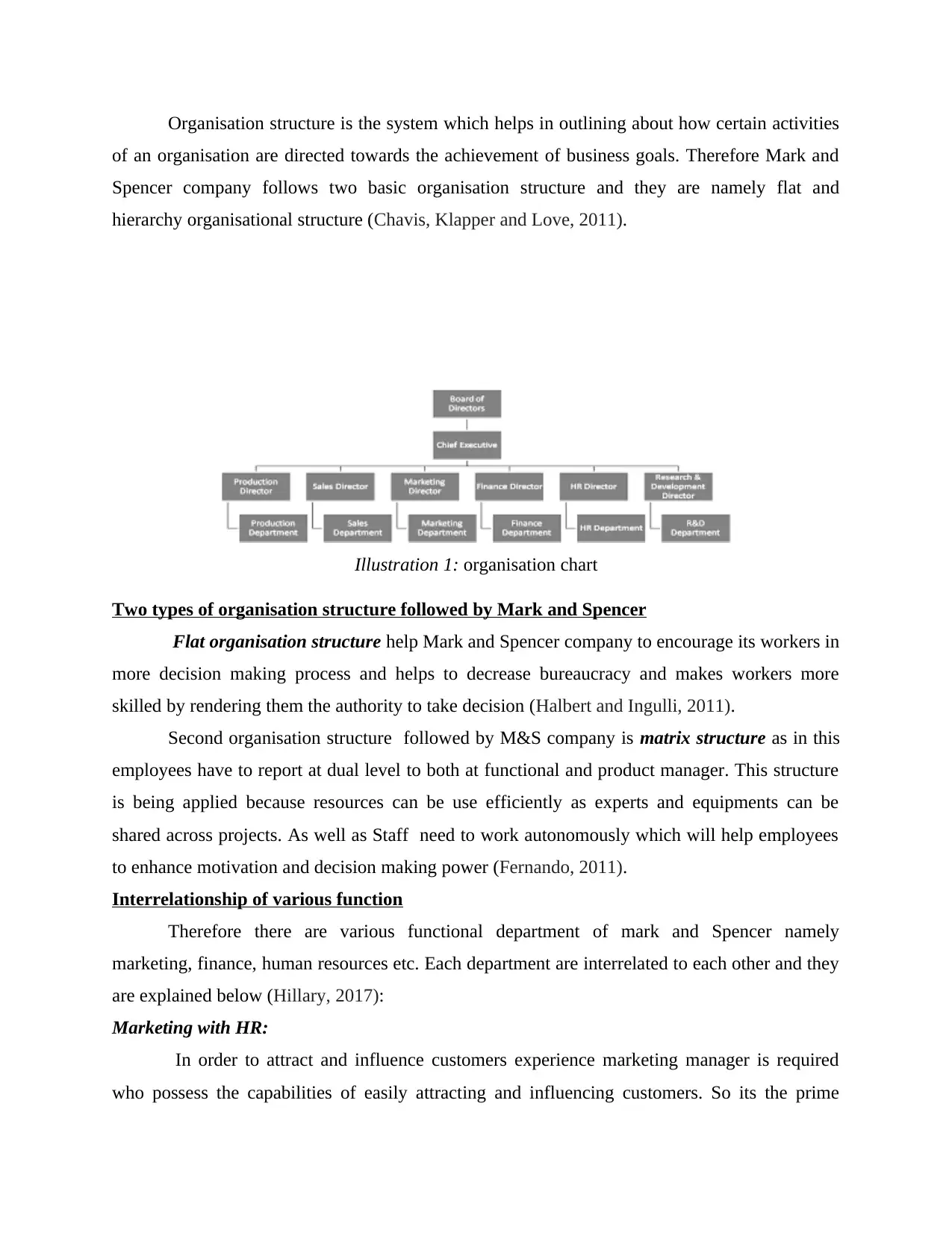
Organisation structure is the system which helps in outlining about how certain activities
of an organisation are directed towards the achievement of business goals. Therefore Mark and
Spencer company follows two basic organisation structure and they are namely flat and
hierarchy organisational structure (Chavis, Klapper and Love, 2011).
Two types of organisation structure followed by Mark and Spencer
Flat organisation structure help Mark and Spencer company to encourage its workers in
more decision making process and helps to decrease bureaucracy and makes workers more
skilled by rendering them the authority to take decision (Halbert and Ingulli, 2011).
Second organisation structure followed by M&S company is matrix structure as in this
employees have to report at dual level to both at functional and product manager. This structure
is being applied because resources can be use efficiently as experts and equipments can be
shared across projects. As well as Staff need to work autonomously which will help employees
to enhance motivation and decision making power (Fernando, 2011).
Interrelationship of various function
Therefore there are various functional department of mark and Spencer namely
marketing, finance, human resources etc. Each department are interrelated to each other and they
are explained below (Hillary, 2017):
Marketing with HR:
In order to attract and influence customers experience marketing manager is required
who possess the capabilities of easily attracting and influencing customers. So its the prime
Illustration 1: organisation chart
of an organisation are directed towards the achievement of business goals. Therefore Mark and
Spencer company follows two basic organisation structure and they are namely flat and
hierarchy organisational structure (Chavis, Klapper and Love, 2011).
Two types of organisation structure followed by Mark and Spencer
Flat organisation structure help Mark and Spencer company to encourage its workers in
more decision making process and helps to decrease bureaucracy and makes workers more
skilled by rendering them the authority to take decision (Halbert and Ingulli, 2011).
Second organisation structure followed by M&S company is matrix structure as in this
employees have to report at dual level to both at functional and product manager. This structure
is being applied because resources can be use efficiently as experts and equipments can be
shared across projects. As well as Staff need to work autonomously which will help employees
to enhance motivation and decision making power (Fernando, 2011).
Interrelationship of various function
Therefore there are various functional department of mark and Spencer namely
marketing, finance, human resources etc. Each department are interrelated to each other and they
are explained below (Hillary, 2017):
Marketing with HR:
In order to attract and influence customers experience marketing manager is required
who possess the capabilities of easily attracting and influencing customers. So its the prime
Illustration 1: organisation chart
⊘ This is a preview!⊘
Do you want full access?
Subscribe today to unlock all pages.

Trusted by 1+ million students worldwide
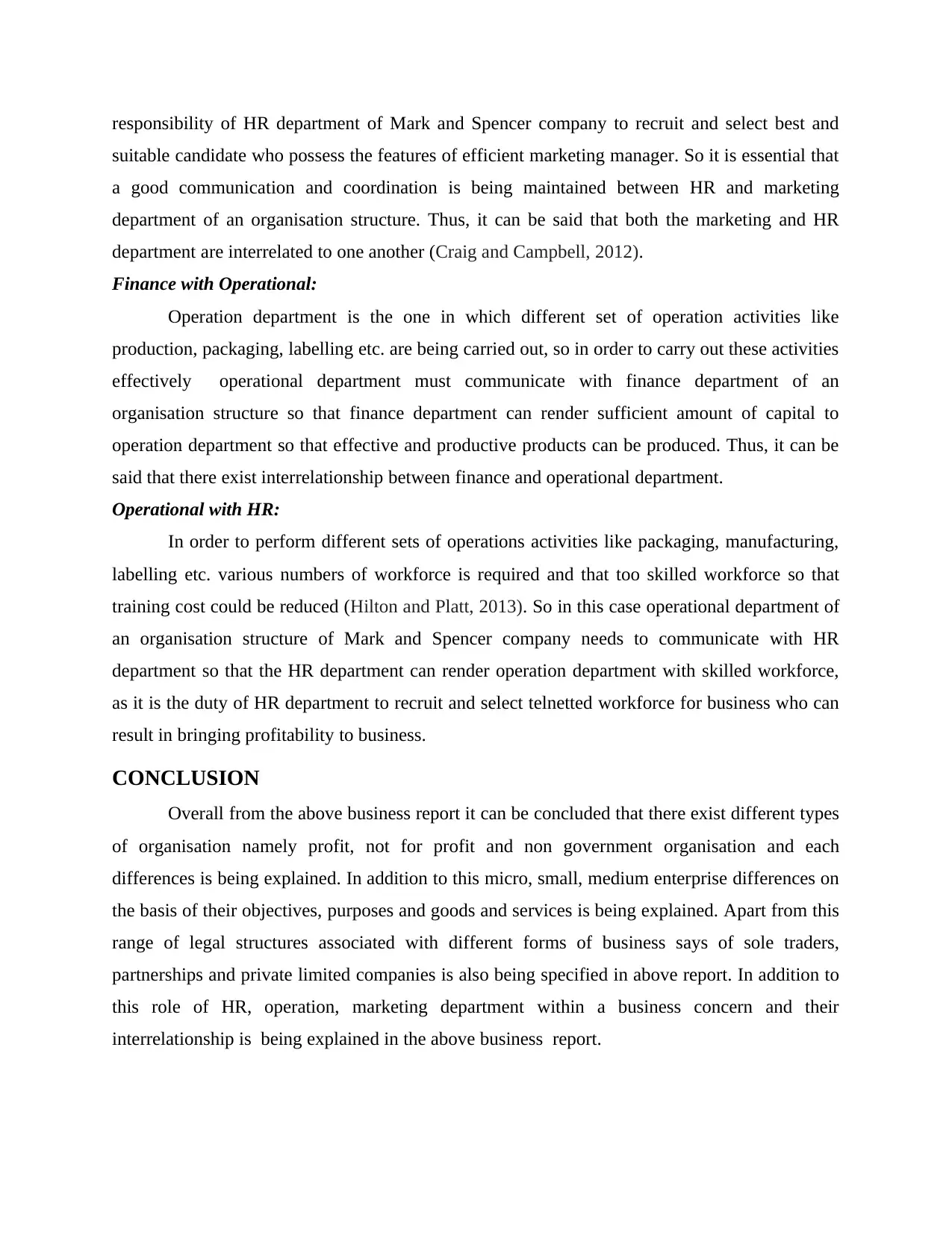
responsibility of HR department of Mark and Spencer company to recruit and select best and
suitable candidate who possess the features of efficient marketing manager. So it is essential that
a good communication and coordination is being maintained between HR and marketing
department of an organisation structure. Thus, it can be said that both the marketing and HR
department are interrelated to one another (Craig and Campbell, 2012).
Finance with Operational:
Operation department is the one in which different set of operation activities like
production, packaging, labelling etc. are being carried out, so in order to carry out these activities
effectively operational department must communicate with finance department of an
organisation structure so that finance department can render sufficient amount of capital to
operation department so that effective and productive products can be produced. Thus, it can be
said that there exist interrelationship between finance and operational department.
Operational with HR:
In order to perform different sets of operations activities like packaging, manufacturing,
labelling etc. various numbers of workforce is required and that too skilled workforce so that
training cost could be reduced (Hilton and Platt, 2013). So in this case operational department of
an organisation structure of Mark and Spencer company needs to communicate with HR
department so that the HR department can render operation department with skilled workforce,
as it is the duty of HR department to recruit and select telnetted workforce for business who can
result in bringing profitability to business.
CONCLUSION
Overall from the above business report it can be concluded that there exist different types
of organisation namely profit, not for profit and non government organisation and each
differences is being explained. In addition to this micro, small, medium enterprise differences on
the basis of their objectives, purposes and goods and services is being explained. Apart from this
range of legal structures associated with different forms of business says of sole traders,
partnerships and private limited companies is also being specified in above report. In addition to
this role of HR, operation, marketing department within a business concern and their
interrelationship is being explained in the above business report.
suitable candidate who possess the features of efficient marketing manager. So it is essential that
a good communication and coordination is being maintained between HR and marketing
department of an organisation structure. Thus, it can be said that both the marketing and HR
department are interrelated to one another (Craig and Campbell, 2012).
Finance with Operational:
Operation department is the one in which different set of operation activities like
production, packaging, labelling etc. are being carried out, so in order to carry out these activities
effectively operational department must communicate with finance department of an
organisation structure so that finance department can render sufficient amount of capital to
operation department so that effective and productive products can be produced. Thus, it can be
said that there exist interrelationship between finance and operational department.
Operational with HR:
In order to perform different sets of operations activities like packaging, manufacturing,
labelling etc. various numbers of workforce is required and that too skilled workforce so that
training cost could be reduced (Hilton and Platt, 2013). So in this case operational department of
an organisation structure of Mark and Spencer company needs to communicate with HR
department so that the HR department can render operation department with skilled workforce,
as it is the duty of HR department to recruit and select telnetted workforce for business who can
result in bringing profitability to business.
CONCLUSION
Overall from the above business report it can be concluded that there exist different types
of organisation namely profit, not for profit and non government organisation and each
differences is being explained. In addition to this micro, small, medium enterprise differences on
the basis of their objectives, purposes and goods and services is being explained. Apart from this
range of legal structures associated with different forms of business says of sole traders,
partnerships and private limited companies is also being specified in above report. In addition to
this role of HR, operation, marketing department within a business concern and their
interrelationship is being explained in the above business report.
Paraphrase This Document
Need a fresh take? Get an instant paraphrase of this document with our AI Paraphraser

TASK 3 and 4
Covered in PPT
Covered in PPT
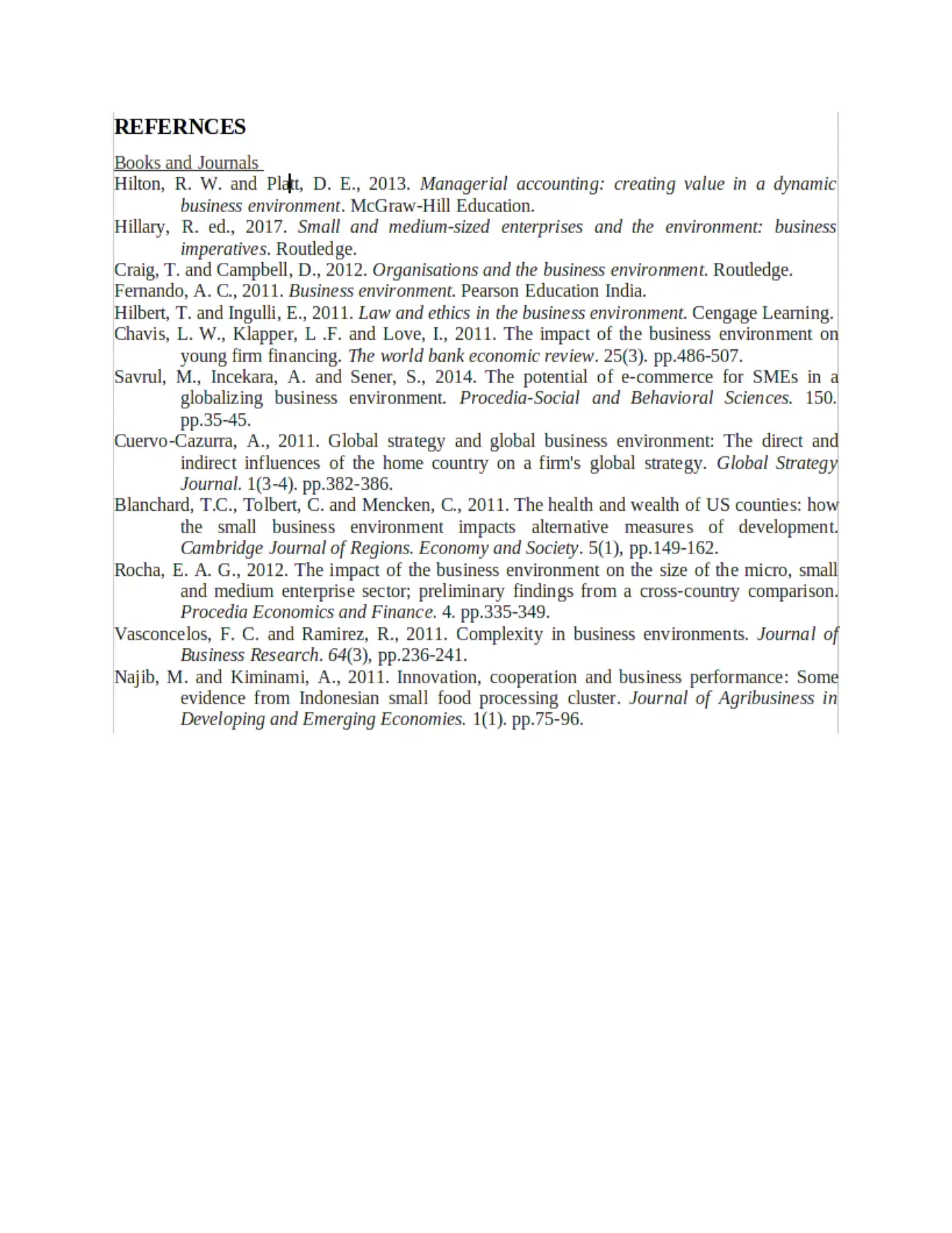
⊘ This is a preview!⊘
Do you want full access?
Subscribe today to unlock all pages.

Trusted by 1+ million students worldwide
1 out of 9
Related Documents
Your All-in-One AI-Powered Toolkit for Academic Success.
+13062052269
info@desklib.com
Available 24*7 on WhatsApp / Email
![[object Object]](/_next/static/media/star-bottom.7253800d.svg)
Unlock your academic potential
Copyright © 2020–2025 A2Z Services. All Rights Reserved. Developed and managed by ZUCOL.



